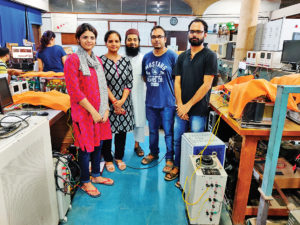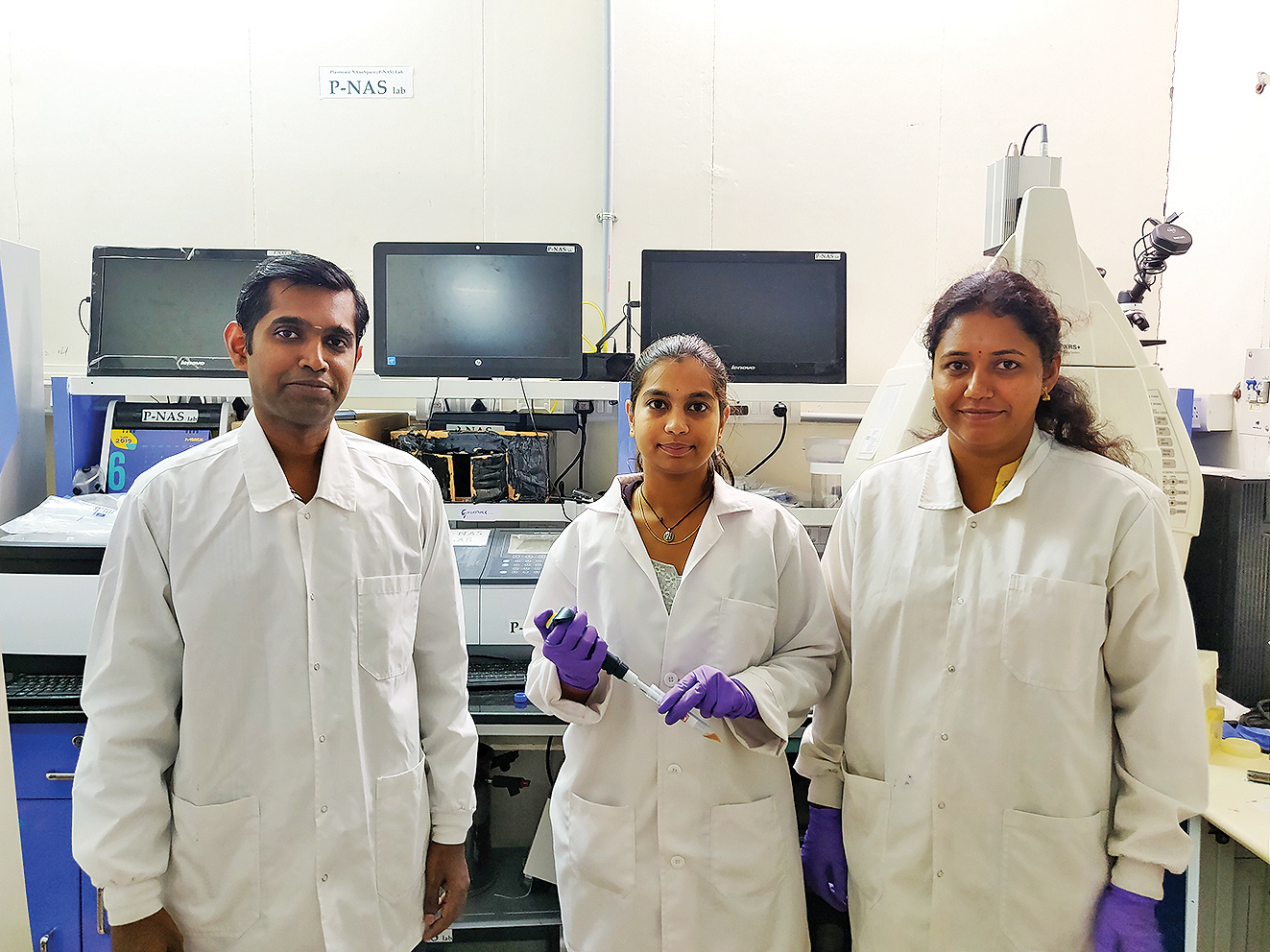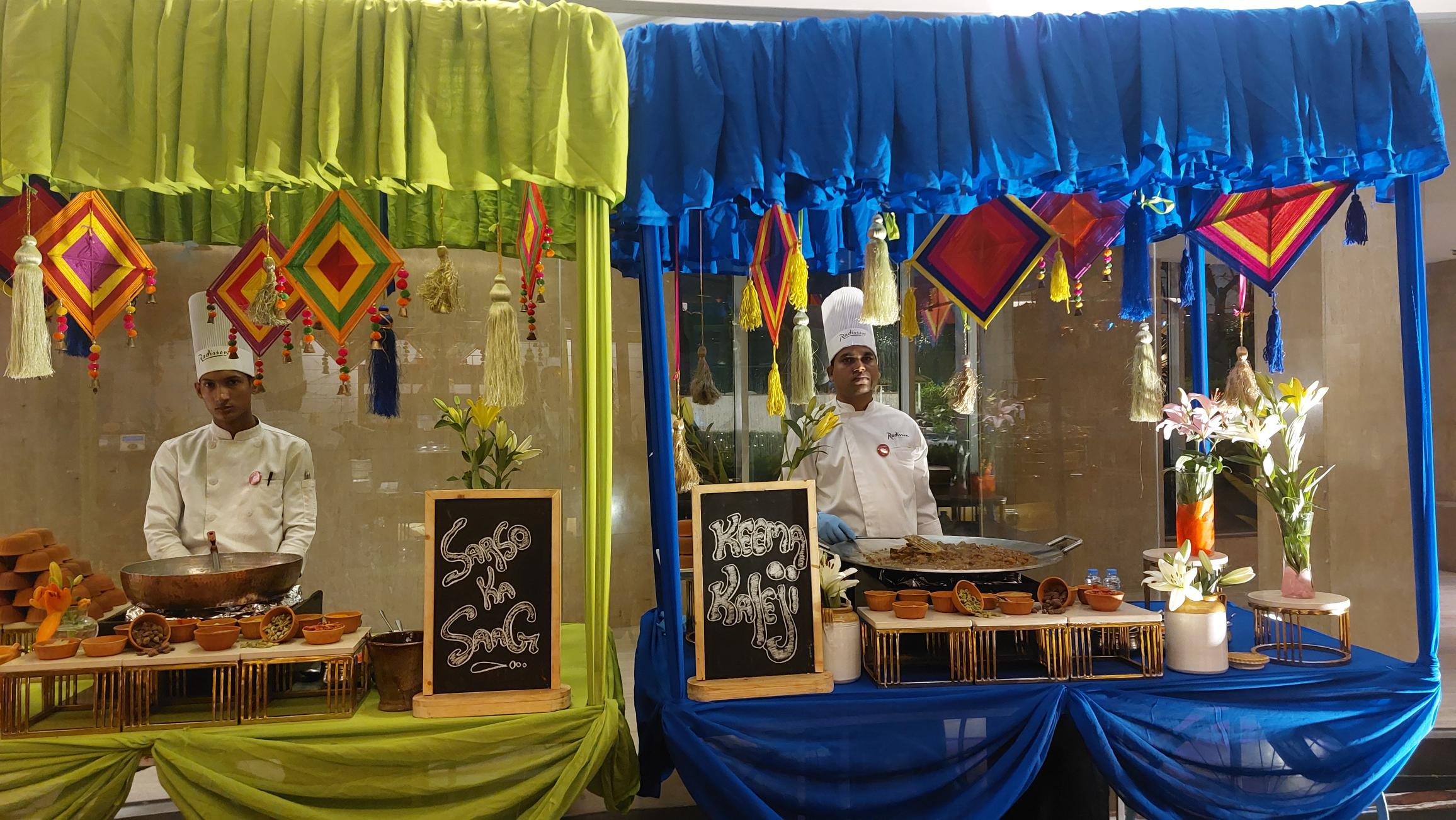One innovation will tackle cancer more effectively and affordably; the other is a solar-powered water pump which would help farmers cut costs
Not everyone needs to be a mad scientist, working in a laboratory alone till the wee hours, dishevelled, abandoning all things soap-based. They can be students like the ones from IITs and IISCs (amongst others) who have been working in teams to bring about innovations which can transform healthcare, technology, energy and security and defence in India.
The tech innovation exhibition at IIT Delhi, saw 50 models or prototypes made under an initiative called Impacting Research, Innovation and Technology (IMPRINT) and 26 under Ucchatar Avishkar Yojana (UAY).
They ranged from design and development of energy-efficient and environment-friendly LPG and kerosene cooking stoves to an automated and efficient glaucoma pre-screening system.
We spoke with two teams to learn what their projects are all about and where they have reached since their grant was first received in 2017.
New Cancer therapy
Aravind Kumar Rangan, Assistant Professor at IIT Hyderabad is one of the three principal investigators — the other two being Prof. Rohit Srivastava from IIT Bombay and Dr Abhijit De from ACTREC — Navi Mumbai — in the project to make “affordable and cost-effective cancer diagnosis/treatment using gold-based biodegradable nanoparticles”.
Started as way back in 2010, Rangan says while he was still a PhD student at IIT Bombay, the project got its first funding of Rs 1.54 crore in 2017 under IMPRINT.
Through this project the team — which includes PhD students – has been able to build a cancer therapy which unlike other measures available, targets a localised area, thus killing only the affected cells and not the healthy ones.
Rangan explains the process: “Here we synthesise nanoparticles which can absorb light in specific wave lengths. This is in the wavelength of near infra-red. These particles will absorb this light and convert it into heat. The heat will kill these cells.”
The system is designed in a way that the nanoparticles will accumulate only in the tumour area. “We will be showering light in the area where it’s known that tumour cells are present. So only the particles that are accumulated there will absorb the light and convert them into heat and kill the cells. Our group works on photothermal therapy in which nanoparticles are synthesised.”
So will their technique replace any therapy? Rangan says it would “most probably” replace the existing therapy or even supplement it. “Cancer is so diverse that even currently not just one modality of therapy is followed. You have multiple therapies like surgery and then after that radiation. Or radiation therapy and then chemo. Similarly, this could work with radiotherapy. All the three types of current therapies have their side effects.”
But in this therapy, “the light on its own is completely harmless. Same goes with the particles. The particles cannot do anything. They are compatible and will degrade and disintegrate and come out of the body.” Theirs will also be more affordable.
At present, the team has just completed its animal studies. When they tested on a mouse, the tumour was completely eradicated, they found. The next step will be clinical trials on humans which will take another 4-5 years to complete.
“This will require a lot of investment. For example, when we go for clinical trials, we would have to synthesise particles using human grade material and we will have to synthesise in a good certified lab. To set that up we would require another Rs 7-8 crore. Only then can we manufacture these particles for clinical trials.”
For the patient, this innovation would cost 10-20 times less than what chemotherapy currently costs, assures Rangan.
Clean farming

We met the team working on the ‘design and development of solar PV-based super-efficient agricultural pumps and hybrid multidimensional inverters’.
The objective of the project, explains Rashmi Rai, one of the five PhD students working on it — headed by Professor Bhim Singh — is to make a system which is cost- effective — and, of course, indigenous.
The latter is the reason why the focus is on eliminating or lessening the requirement of magnets which are used in the pumps currently available. “The pumps come from other countries, like, for example, China. Their products are not just expensive but also not the best quality”, says Aryadip Sen, another team
member.
Each of the five individuals are working on five different machines — ‘from its development in a laboratory to field trial test’.
Their work has been carried out in collaboration with a company called Shakti Pump India after the grant of Rs 4.5 crore was sanctioned in January 2017. While some is still to come through, they say a large chunk of it, about Rs 1.25 crore, has not yet been released by the Ministry of Power.
“Shakti Pump is located in Indore, so the main product is developed there and then brought to our lab for testing.”
Hina Parveen, who is working on the synchronised reluctance motor, says she is finding a way to increase the efficiency of the motor. Since it is made of steel, it lowers the cost.
Mohd Kashiv is working on improving the design of permanent synchronised machine made by Shakti, along with increasing the motor’s efficiency. It is looking at ways to minimise the number of magnets in the machine.
“These are all solar powered machines that we are working on. The sun’s energy being abundantly available, the cost automatically is lowered. Plus, with villages not receiving proper electricity, this becomes a highly useful way to pump water for a farmer.”
Their project would conclude by 2020.
other innovations showcased in the capital
IMPRINT scheme was launched in November, 2015 for 10 selected technology domains, including healthcare, energy, sustainable habitat, nano-technology hardware, Information and Communication Technology (ICT), security and defence, environmental science and climate change.
Uchhatar Avishkar Yojana (UAY) was announced on October 6, 2015 with a view to promoting innovation that directly impacts the needs of the Industry and thereby improves the competitive edge of Indian manufacturing.
Some of the other projects at the exhibition were:
– An Automated and Efficient Glaucoma Prescreening System — by IISc Bengaluru
– Development of SERS based ultra-sensitive, rapid, portable and field deployable platform for detection of pathogenic bacteria and Dengue virus — by IIT Delhi
– Artificial skin (Bio-inspired bi-layer polymeric hybrid scaffold) for burn injuries and trauma care — by IIT Delhi
– Design of a Surface-Enhanced Spectroscopy based Device for the Rapid Detection of Organophosphate Pesticides and Pyrethroid Insecticides in Fruits and Vegetables — by IISER – TVM
– Ultrahigh efficiency CMOS compatible Si/Ge Single Nanowire Photodetectors in Infrared and THz Wavelengths for Defence and Security Applications — by IIT Kharagpur





